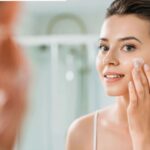The digital world continues to evolve rapidly, and with it comes an ever-growing range of cyber threats. As we step into 2024, cybersecurity remains a critical concern for individuals and organizations alike.
From data breaches to ransomware attacks, cybercriminals are constantly adapting their tactics, making it essential to stay ahead with robust strategies to safeguard your digital life.
Understanding the Cybersecurity Landscape in 2024
The cybersecurity landscape in 2024 is shaped by advanced technologies and sophisticated cyber threats. Hackers are leveraging tools like artificial intelligence (AI) and machine learning (ML) to launch more targeted and effective attacks.
Meanwhile, the proliferation of Internet of Things (IoT) devices has expanded the attack surface, providing cybercriminals with more opportunities to exploit vulnerabilities.
Emerging threats such as deepfake scams, cloud-based vulnerabilities, and social engineering attacks are also gaining prominence. These developments highlight the importance of adopting a proactive approach to cybersecurity.
Strengthening Personal Cybersecurity

Personal cybersecurity begins with strong foundational practices to minimize risks. Use unique, complex passwords for all accounts, coupled with two-factor authentication for added protection.
Regularly update software to address vulnerabilities and stay ahead of potential threats.
1. Use Strong and Unique Passwords
A strong password is your first line of defense against unauthorized access. Ensure your passwords are long, complex, and unique for each account.
Utilize a mix of uppercase and lowercase letters, numbers, and special characters. To simplify managing multiple passwords, consider using a reliable password manager.
2. Enable Two-Factor Authentication (2FA)
Two-factor authentication adds an extra layer of security by requiring a second form of verification, such as a text message code or a biometric scan. This significantly reduces the risk of unauthorized access, even if your password is compromised.
Read This Blog: Simcity: The Future of Simplicity in Urban Living
3. Regular Software Updates
Outdated software often contains vulnerabilities that cybercriminals exploit. Keep your operating systems, applications, and antivirus software up to date. Enable automatic updates whenever possible to ensure you have the latest security patches.
Securing Connected Devices
Securing connected devices is crucial in today’s interconnected world. Change default passwords on IoT devices and configure a secure home network with WPA3 encryption. Use separate networks for sensitive devices to limit potential exposure to cyberattacks.
1. Protect IoT Devices
Internet-connected devices, such as smart thermostats and security cameras, are common targets for hackers. Change default passwords immediately after setting up your IoT devices.
Additionally, connect these devices to a separate network to limit potential damage if one is compromised.
2. Use a Secure Wi-Fi Network
Ensure your home Wi-Fi network is secured with a strong password and WPA3 encryption.
Avoid using public Wi-Fi networks for sensitive activities, such as online banking. If you must use public Wi-Fi, connect through a virtual private network (VPN) to encrypt your data.
Recognizing and Avoiding Phishing Scams

Phishing scams remain one of the most prevalent cybersecurity threats. Cybercriminals often use emails or messages to trick users into revealing sensitive information.
1. Verify Suspicious Emails
Before clicking on links or downloading attachments, verify the sender’s identity. Look for signs of phishing, such as generic greetings, spelling errors, or urgent requests for personal information.
2. Educate Yourself and Others
Understanding how phishing works can help you spot red flags. Share this knowledge with family members and colleagues to create a more informed and secure environment.
Adopting Advanced Security Measures
Advanced security measures provide a layered defense against evolving threats. Leverage AI-driven tools to detect anomalies and respond quickly to attacks. Conduct regular security audits to identify and fix vulnerabilities in your systems and networks.
1. Utilize Multi-Layered Security
Relying on a single security measure is not enough in today’s threat landscape. Implement multi-layered security solutions, combining antivirus software, firewalls, and intrusion detection systems to create a robust defense.
2. Leverage Artificial Intelligence
AI-driven security tools can detect anomalies and respond to threats in real-time. These tools are particularly effective in identifying patterns that may indicate malicious activity.
3. Conduct Regular Security Audits
Regularly review your digital security practices to identify potential vulnerabilities. Perform audits on your systems, networks, and devices to ensure they meet the latest security standards.
Protecting Sensitive Data
Protecting sensitive data requires encryption and secure backup strategies. Encrypt files to ensure unauthorized users cannot access them, even if intercepted. Regularly back up data to encrypted storage and test backups to maintain data integrity.
1. Encrypt Your Data
Data encryption ensures that even if your information is intercepted, it remains unreadable to unauthorized parties.
Use encryption tools for sensitive files and enable encryption on your devices and cloud storage.
2. Implement Data Backup Strategies
Regularly back up your data to a secure location, such as an external hard drive or a cloud service. Ensure backups are encrypted and test them periodically to verify their integrity.
The Role of Cybersecurity Awareness

Cybersecurity awareness is vital for staying ahead of threats in an ever-changing landscape. Stay informed about emerging risks and best practices through reputable sources.
Promote a culture of security by sharing knowledge and encouraging vigilance in personal and professional settings.
1. Stay Informed
Cybersecurity is an ever-changing field. Keep up to date with the latest threats and security practices by following reputable sources and participating in cybersecurity training.
2. Encourage a Security-First Culture
For organizations, fostering a culture that prioritizes cybersecurity can significantly reduce risks. Regular training sessions and clear policies can help employees stay vigilant against potential threats.
Frequently Asked Questons
What is the most effective way to protect my accounts?
Use strong, unique passwords and enable two-factor authentication for all accounts.
How can I secure my IoT devices?
Change default passwords, keep firmware updated, and connect them to a separate network.
Why are software updates important for cybersecurity?
Updates fix vulnerabilities and protect your devices from the latest threats.
What should I do to avoid phishing scams?
Verify the sender’s identity and avoid clicking on suspicious links or attachments.
How can I ensure my data is safe if my device is compromised?
Encrypt sensitive data and regularly back it up to secure, encrypted storage.
Conclusion
As technology advances, so do the tactics of cybercriminals. Protecting your digital life in 2024 requires a combination of proactive measures, continuous education, and the adoption of advanced tools and strategies.
By implementing strong passwords, enabling two-factor authentication, securing your connected devices, and staying informed about emerging threats, you can minimize your risk and enjoy the benefits of the digital world with peace of mind.
The key to effective cybersecurity lies in staying one step ahead. Whether you’re an individual safeguarding personal data or an organization protecting critical assets, a comprehensive approach to cybersecurity is more essential than ever in today’s digital age.

Smith is a talented content writer and digital marketer with expertise in SEO, social media management, and online marketing. She excels at creating impactful, data-driven content to help businesses connect with their target audience and achieve measurable outcomes.







